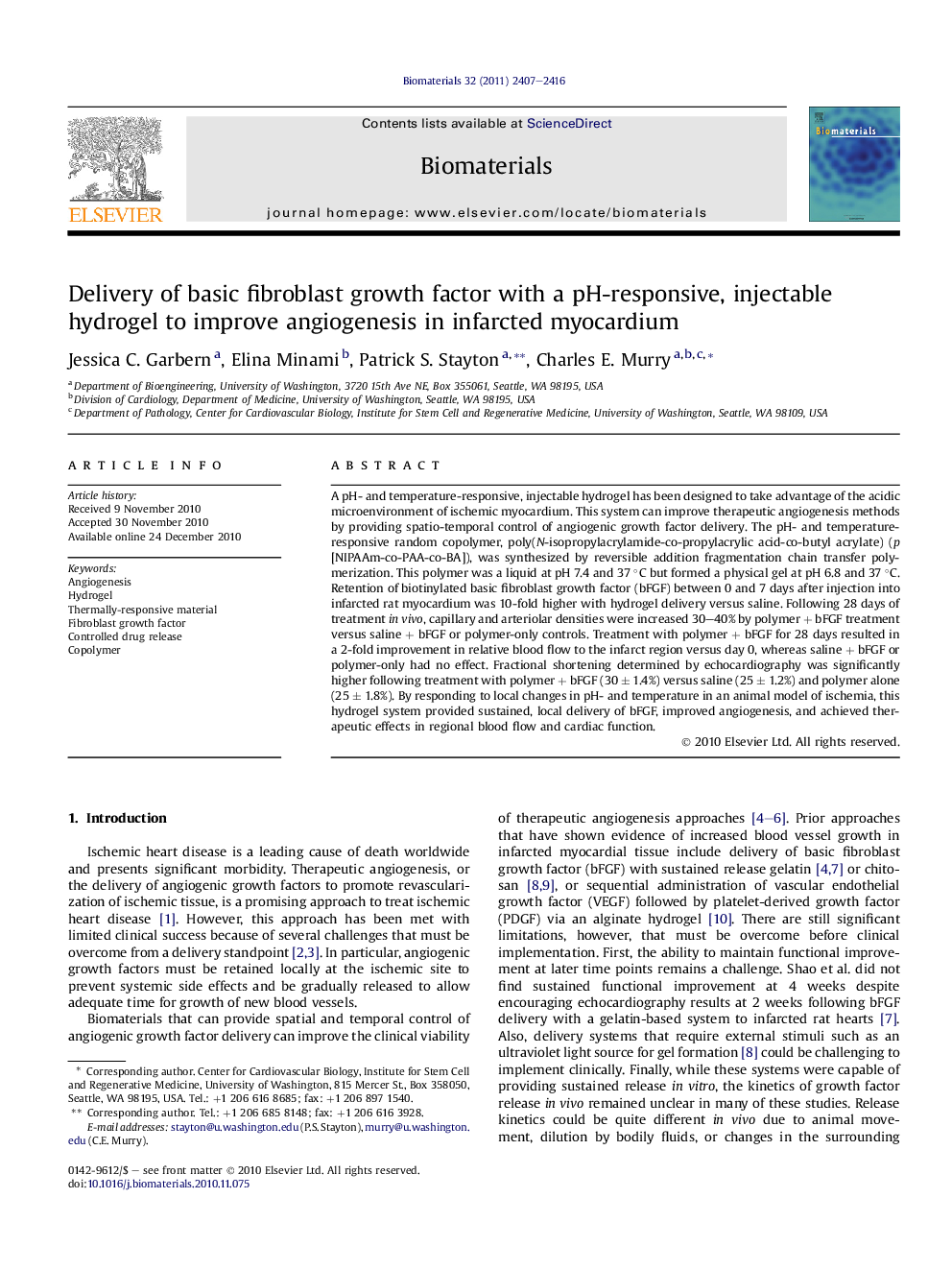| Article ID | Journal | Published Year | Pages | File Type |
|---|---|---|---|---|
| 7429 | Biomaterials | 2011 | 10 Pages |
A pH- and temperature-responsive, injectable hydrogel has been designed to take advantage of the acidic microenvironment of ischemic myocardium. This system can improve therapeutic angiogenesis methods by providing spatio-temporal control of angiogenic growth factor delivery. The pH- and temperature-responsive random copolymer, poly(N-isopropylacrylamide-co-propylacrylic acid-co-butyl acrylate) (p[NIPAAm-co-PAA-co-BA]), was synthesized by reversible addition fragmentation chain transfer polymerization. This polymer was a liquid at pH 7.4 and 37 °C but formed a physical gel at pH 6.8 and 37 °C. Retention of biotinylated basic fibroblast growth factor (bFGF) between 0 and 7 days after injection into infarcted rat myocardium was 10-fold higher with hydrogel delivery versus saline. Following 28 days of treatment in vivo, capillary and arteriolar densities were increased 30–40% by polymer + bFGF treatment versus saline + bFGF or polymer-only controls. Treatment with polymer + bFGF for 28 days resulted in a 2-fold improvement in relative blood flow to the infarct region versus day 0, whereas saline + bFGF or polymer-only had no effect. Fractional shortening determined by echocardiography was significantly higher following treatment with polymer + bFGF (30 ± 1.4%) versus saline (25 ± 1.2%) and polymer alone (25 ± 1.8%). By responding to local changes in pH- and temperature in an animal model of ischemia, this hydrogel system provided sustained, local delivery of bFGF, improved angiogenesis, and achieved therapeutic effects in regional blood flow and cardiac function.
